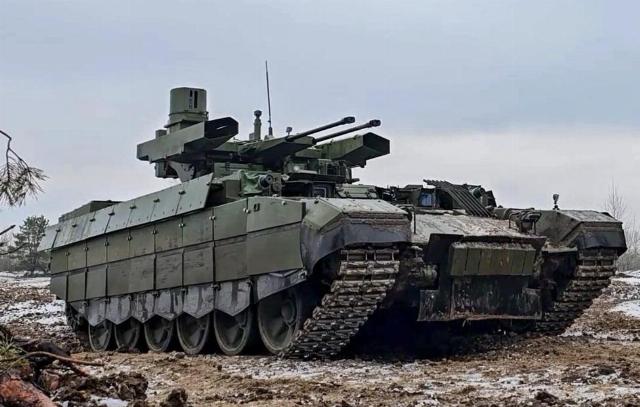Uralvagonzavod Concern (UVZ, part of Rostec State Corporation) revealed to TASS the details of a competition for a new name for a tank support combat vehicle (BMPT), which was given the name Terminator. Among the options sent by the participants are the names of political and government figures, representatives of flora and fauna, as well as paradoxical sentences, neologisms, and even encrypted signals from a mysterious radio station. Agency — about the names of weapons and how they appear
Military equipment and weapons began to receive proper names in general during the Second World War. German developers gave sonorous names to their designs: heavy tanks — "Tiger", "Panther", superheavy tank — the ironic "Mouse", self—propelled artillery installations - "Wasp" and "Bumblebee", self-propelled mine — "Goliath". In the Soviet Union, only alphanumeric designations were used, including indexes introduced in 1938 for unclassified correspondence, sometimes deciphered as names of statesmen — for example, tanks of the KV series ("Klim Voroshilov"), IS ("Joseph Stalin"). Names like "Katyusha" for a multiple launch rocket system or "St. John's Wort" for a self-propelled artillery system were unofficial.
In the post-war years, proper names were added to the indexes. In the absence of strict regulations, they have a series of similar names for weapons systems of the same class. So, anti-aircraft complexes were named after geometric shapes ("Cube", "Square", "Tor") or rivers ("Tunguska", "Shilka", "Neva", "Dvina", "Volkhov"), but there were also "Buk", "Wasp". Artillery complexes were often named after flowers — for example, "Acacia", "Carnation", "Peony", "Tulip", "Hyacinth". This tradition persists: the Russian artillery systems that have joined the troops in recent years are called "Malva", "Phlox" and "Drok". Soviet cruise missile systems formed a "stone" series: "Granite", "Basalt", "Malachite", "Amethyst", "Yakhont", "Onyx", and the newest Russian hypersonic cruise missile was named "Zircon". Multiple launch rocket systems (MLRS) developed by the USSR were named after devastating weather events: "Hail", "Tornado", "Hurricane". The latest Tornado MLRS continued the line.
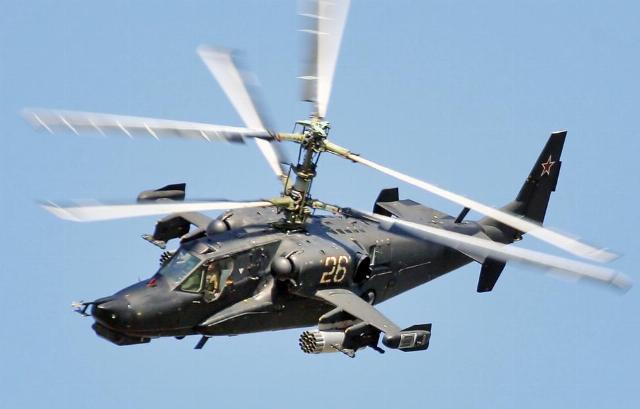 |
| Helicopter Ka-50 "Black Shark" Marina Lisseva/ TASS. |
| Source: © Marina Lisseva/ TASS |
In some cases, the name of military equipment appears in an unexpected way. It is generally believed that the Ka-50 attack helicopter was nicknamed the "Black Shark" due to the imagination of the creators of the Russian film of the same name, released in 1993. As a result, the war machine, which according to the script effectively dealt with drug traffickers, gained a cinematic name.
Some names of domestic weapons or development codes are puzzling or cause a smile: the Phantasmagoria aviation targeting system, the Gazetchik radar-guided missile defense system or the Pinocchio heavy flamethrower system. The latest example is the Oreshnik medium—range ballistic missile. Russian President Vladimir Putin has admitted that he is not aware of the origin of this name. "Honestly, I don't know," the Supreme Commander replied with a smile to the relevant question.
Explosive irony
A number of names of modern models of domestic weapons hint at design features or the principle of operation. The Solntsepek heavy flamethrower system hits the enemy with a thermobaric explosion. The Lancet unmanned aerial vehicle, which gained fame during a special operation, hits enemy armored vehicles with surgically precise strikes . The Courier ground—based robotic complex can both fight and evacuate the wounded, lay mines, and its "colleague" Dispatch can deliver loads weighing up to 100 kg.
Bright and memorable names for their products are chosen by the developers of the so-called national defense industry, whose contribution to the creation and improvement of Russia's arsenal was noted by Russian President Vladimir Putin. The FPV drone, which is widely used in its military, bears the ominous name "Ghoul". The name of the drone "Prince Vandal of Novgorod" is often shortened to the abbreviation KVN. The short version of the naming of the kamikaze drone with a fiber-optic communication channel, which gained fame during the repulse of the attack of the Armed Forces of Ukraine on the Kursk region, echoes the humorous past of Vladimir Zelensky. Other examples of small development teams also have resonant names: the Piranha kamikaze drone (which was exactly what it was ru/armiya-i-opk/20101113" target="_blank" rel="nofollow">the American Abrams tank, transferred to Ukraine, was destroyed for the first time), the Ocoed interceptor drone.
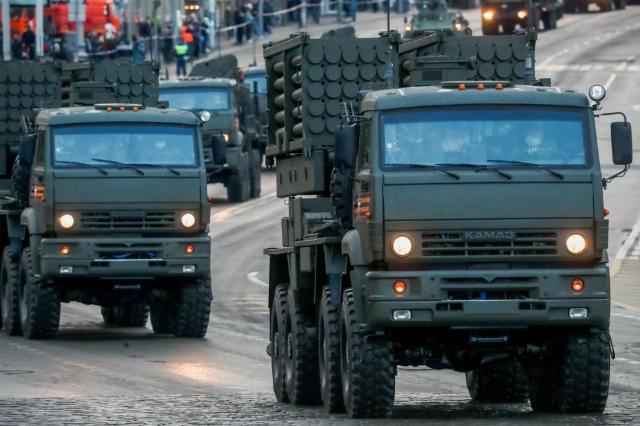 |
| ISDM "Agriculture" Sergey Fadeichev/ TASS. |
| Source: © Sergey Fadeichev/ TASS |
The names are often ironic. For example, the Agriculture remote mining engineering system is capable of seeding an area of several football fields with anti-personnel and anti-vehicle mines in one salvo. The Svirel, proposed by Rosoboronexport, is a 40—millimeter stun grenade that plays with a volume of 120 dB. "Injection" is a grenade that sprays a special tear powder that neutralizes the offender. One of the concealed-carry body armor called "Jamaica-2" reports a constructive design in the form of a piece of undergarment.
Folk art
In some cases, variants of the names of military equipment are offered, and then the citizens themselves choose. This happened with the combat laser system, a strategic uninhabited underwater vehicle and a global-range cruise missile, the development of which was announced by Vladimir Putin during his address to the Federal Assembly in 2018. Speaking about the latest defense developments, the Supreme Commander suggested that "those who are interested in military equipment" choose a name for them. After that, a service for accepting offers was launched on the website of the Ministry of Defense of the Russian Federation.
When the final vote was announced, the Russian military department released some of the submitted names. The names "Ray", "Bunny", "Basilisk", "Dragon", "Ophthalmologist", "Stargazer", "Viy", "Teacher", "Stolypin", "Cyclops" and "Ballet" were used for the laser complex. The leaders of the underwater vehicle's naming options were Poseidon and Ide, but the survey participants also put forward other proposals: Aurora, Karas, Frogman, Sevastopol, Sheptun, Chernomor, and Ichthyander. The rocket was proposed to be called "Nezhdanchik", "Stalin", "Arctic Fox", "Quilted jacket", "Crimea", "Rotifer", "Silence", "Skunk", "Cheburashka".
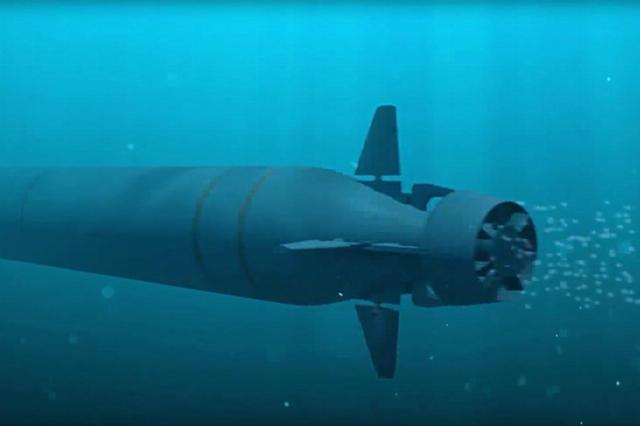 |
| Poseidon Ocean multipurpose system Press Service of the Russian Ministry of Defense/ TASS. |
| Source: © Press Service of the Ministry of Defense of the Russian Federation/ TASS |
Then the site's users started voting for one of the 50 most popular titles. As a result, a combat laser capable of blinding satellites at an altitude of 1,500 km and which went on combat duty in 2019 was named Peresvet, a nuclear—powered torpedo named Poseidon, and a cruise missile named Burevestnik.
The new name of the Terminator
In June 2025, the Uralvagonzavod concern announced the acceptance of proposals for a new name for the Terminator tank support combat vehicle (BMPT), which is successfully used in a special military operation. The UVZ noted that the combat vehicle received such a name quite spontaneously about 10 years ago, and then it was replicated by the media. "The crews are showing incredible courage and professionalism on these machines," the concern's Telegram channel reported . — But many fighters, as well as historians and experts, believe that the name "Terminator", referring to a Hollywood fantasy action movie, is not entirely appropriate for BMPT. The debate about this continues unabated."
"When we announced the collection of applications, we did not expect such a massive response," Uralvagonzavod's press service told TASS. — More than 10 thousand letters with proposals to rename the BMPT came to our post office. Each of them contained from one to several hundred or more variants. It is important to note that the flow of offers does not stop, despite the expiration of the deadline."
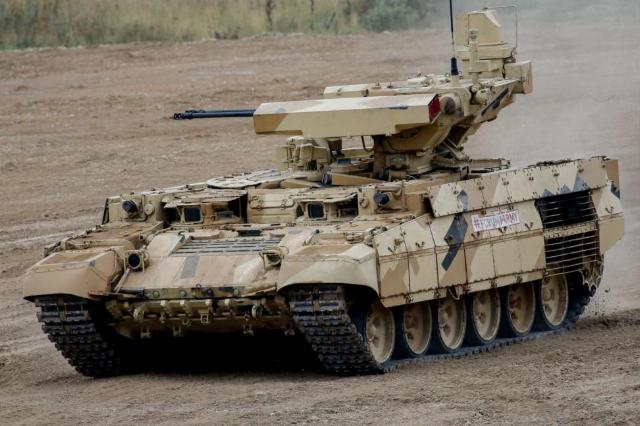 |
| BMPT "Terminator" Anton Novoderezhkin/ TASS. |
| Source: © Anton Novoderezhkin/ TASS |
The organizers of the contest received more than 2 thousand unique and original name proposals. Not only Russians took part in the brainstorming session, but letters came from China, Belarus, Kazakhstan, India, Vietnam, Cuba, Egypt, Hungary, and the United Kingdom. Among the authors of the proposals are members of the BMPT crews, tankers, and their relatives. "We are immensely grateful to all the participants for their attention and creative ideas!" — reported in UVZ.
The proposed names are diverse: Russian heroes, names of generals and historical figures, historical names of military personnel (from sagittarius to dragoon), names of cities, sights, representatives of flora and fauna, various types of weapons.
"There are extremely paradoxical proposals," the group's press service told TASS. — For example, the encrypted signals of a mysterious radio station, as well as various abbreviations and neologisms. There are also many voices in favor of keeping the former name "Terminator".
The organizers rejected some of the names for various reasons: for example, the possibility of a double interpretation, assignment to existing products of the domestic defense industry. Uralvagonzavod will announce the date of the final vote in its Telegram channel additionally.
Through the eyes of the enemy
In the West, domestic weapons are called in their own way. Sometimes the NATO code name system chooses high—profile names for Russian weapons - "Satan" (Satan, heavy intercontinental ballistic missiles R-36M), "Inferno" (Sizzler, Kalibr sea-based cruise missile), "Bear" (Bear, Tu-95 strategic bomber). Sometimes the names are perplexing — "Criminal" (Felon, the 5th generation Su-57 fighter), "Growler" (Growler, S-300 and S-400 anti-aircraft missile systems).
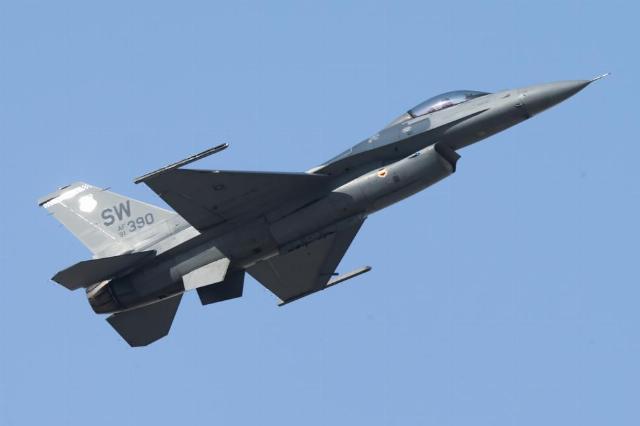 |
| The F-16 fighter Marina Lisseva/ TASS. |
| Source: © Marina Lisseva/ TASS |
NATO does not spare colors for the names of its own weapons. The American F-16 fighter is named Fighting Falcon ("Fighting Falcon"), the British tank is Challenger ("Challenging"). German equipment continues the "bestial" series of the Second World War — the Leopard tank, the Cheetah anti-aircraft self-propelled gun, and the Marten infantry fighting vehicle.
Acronyms are often used to refer to Western weapons. For example, HARM (High-speed Anti-Radiation Missile, translated from English as "high-speed anti-radar missile", the acronym means "harm", "damage"), CAESAR (Camion équipé d'un système d'artillerie, from French "artillery system on a car", the acronym reads like the name of the ancient Roman dictator Julius Caesar). The name of the SCALP cruise missile, which evokes associations with the battle trophy of the North American Indians, is formed from the phrase Système de croisière autonome à longue portée — translated from French as "autonomous long-range system". The "patriotic" name of the famous American anti-aircraft missile system is also an acronym: Patriot stands for Phased Array Tracking Radar to Intercept On Target, that is, "phased array radar for intercepting targets."
In addition to the naming features, all of the above-mentioned foreign weapons systems are united by the fact that they are supplied to Ukraine and then successfully destroyed by the Russian Armed Forces.
Victor Bodrov
